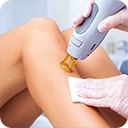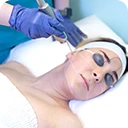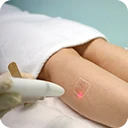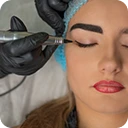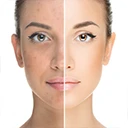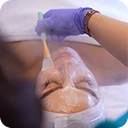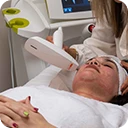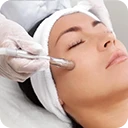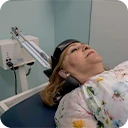Microneedling stands out as a minimally invasive cosmetic procedure designed to rejuvenate the skin by leveraging the body’s own natural healing mechanisms. At its core, microneedling involves the use of fine, sterile needles that create thousands of microscopic punctures in the skin’s outermost layer. While these tiny injuries are virtually invisible to the naked eye, they act as catalysts for a powerful biological response.
When the skin detects these controlled micro-injuries, it initiates a process known as collagen induction therapy. Collagen and elastin—two vital proteins responsible for skin’s firmness, elasticity, and youthful appearance—are synthesized in greater quantities as part of the wound-healing process. This surge in protein production helps to smooth out fine lines and wrinkles, diminish acne scars, and improve overall skin texture.
The benefits of microneedling extend beyond mere aesthetics. Not only can it reduce pore size and address pigmentation irregularities, but it also enhances the absorption and efficacy of topical products applied post-treatment. Commonly treated areas include the face, neck, décolletage, and hands—regions where signs of aging and environmental damage are often most visible.
Safety is another key advantage. Microneedling is generally well-tolerated by most skin types, with mild and temporary side effects such as redness, slight swelling, or sensitivity. These typically resolve within a few days, making it a popular choice for individuals seeking noticeable results without significant downtime. Before undergoing treatment, a thorough consultation ensures any risks are minimized and the approach is tailored to individual needs.
From Tradition to Technology: The Evolution of Microneedling Treatments
Microneedling’s journey from its origins to modern-day innovation is a testament to both cultural heritage and technological progress. The earliest concepts of microneedling can be traced back to acupuncture, an ancient practice that used fine needles for therapeutic purposes. In the late 20th century, these ideas were adapted for cosmetic use, giving rise to the first manual dermarollers.
Manual dermarollers, while groundbreaking for their time, presented limitations. They relied heavily on the practitioner’s skill, leading to variability in needle penetration depth and pressure. This inconsistency sometimes resulted in uneven results and heightened the risk of skin irritation.
The advent of automated microneedling devices marked a turning point. Motorized dermapens, featuring adjustable needle lengths and speeds, brought a new level of precision and safety to the procedure. Practitioners could now tailor treatments to specific skin concerns and areas, ensuring more predictable and effective outcomes.
A major leap forward came with the introduction of radiofrequency (RF) microneedling. By combining the mechanical action of needles with controlled RF energy, these devices deliver thermal stimulation deep within the skin, further promoting collagen synthesis and noticeable skin tightening. The synergy between needling and RF energy has expanded the scope of microneedling, making it an effective solution for more advanced concerns such as deep wrinkles and laxity.
In recent years, practitioners have also begun to incorporate biologically active serums—like growth factors, peptides, and hyaluronic acid—during or immediately after microneedling sessions. These compounds penetrate the micro-channels created by the needles, amplifying rejuvenation and accelerating healing. As technology and understanding evolve, so too does the ability to deliver personalized, effective skin rejuvenation solutions.
Emerging Breakthroughs Shaping Microneedling in 2025
As the aesthetics field enters 2025, microneedling is experiencing a wave of innovative advancements that promise to redefine skin rejuvenation. One of the most exciting developments is the emergence of advanced microneedle designs. Biodegradable microneedles, for instance, dissolve after treatment, delivering active compounds directly into the skin while minimizing the risk of infection and reducing environmental impact. Smart microneedles equipped with embedded sensors can monitor real-time skin conditions such as hydration and pH, enabling personalized, data-driven adjustments throughout the procedure.
Enhanced delivery systems are another game-changer. Drug-loaded microneedles can now transport peptides, vitamins, and growth factors deep into the dermis, precisely targeting areas in need of rejuvenation. The use of nanoparticle-infused microneedles protects delicate compounds and allows for controlled, sustained release over time, leading to longer-lasting and more consistent results.
Integrating cutting-edge technology, radiofrequency and laser-assisted microneedling devices are gaining traction. These platforms combine the mechanical benefits of needling with energy-based modalities, allowing practitioners to address deeper wrinkles, scars, and laxity with greater specificity and minimal downtime.
Personalization is a defining theme of 2025’s microneedling breakthroughs. Artificial intelligence (AI) is being harnessed to analyze individual skin data and recommend optimal treatment protocols, while genetic-based customization takes into account a person’s unique predispositions to certain skin conditions. These advancements are paving the way for highly tailored, effective solutions that cater to each client’s specific needs, making skin rejuvenation safer, more efficient, and increasingly eco-friendly.
Personalized Skin Rejuvenation: AI and Smart Devices Redefining Care
Personalization is emerging as the cornerstone of modern microneedling, thanks to the integration of artificial intelligence and smart device technology. Today’s advanced systems are equipped to analyze a patient’s skin in remarkable detail, assessing factors like texture, elasticity, pigmentation, and moisture levels. Using AI-driven diagnostics, practitioners can develop truly bespoke treatment plans that optimize results while minimizing risks.
Customizable microneedling devices now feature adjustable needle depths and interchangeable heads, allowing precise targeting of different skin zones and concerns. These enhancements not only improve safety but also ensure that every session is fine-tuned to the client’s unique requirements.
Smart technology is also transforming the treatment process itself. Real-time monitoring capabilities allow devices to automatically adjust parameters—such as needle speed and penetration depth—based on feedback from the skin. This ensures consistent application and reduces the likelihood of adverse effects, even across varying skin conditions.
The personalization trend extends to post-procedure care. Practitioners can now select or formulate serums and growth factors tailored to the individual’s skin profile, further enhancing healing and rejuvenation. A collaborative approach is encouraged, with practitioners educating patients about their options, expected outcomes, and aftercare, empowering them to make informed decisions and take an active role in their skin health journey.
This patient-centric model not only elevates the standard of care but also fosters trust and long-term satisfaction, as treatments are adapted to evolving needs and preferences.
Looking Ahead: What the Future Holds for Advanced Microneedling
The future of microneedling is brimming with potential, shaped by rapid technological progress and a growing emphasis on personalization. The ongoing integration of AI and smart devices is expected to become even more sophisticated, enabling real-time data analysis, remote monitoring, and virtual consultations. This will make expert skin rejuvenation more accessible and tailored, especially for individuals who seek professional guidance from the comfort of their own homes.
The boundaries of microneedling are also expanding through the combination of complementary therapies. Techniques such as laser therapy and photobiomodulation, when paired with microneedling, are demonstrating enhanced efficacy in targeting complex skin concerns like deep scarring and persistent pigmentation. As these hybrid approaches become more refined, they offer the possibility of comprehensive, multi-layered rejuvenation.
Sustainability and patient safety are key considerations for future innovations. The adoption of biodegradable microneedles and eco-friendly device materials reflects a commitment to minimizing environmental impact and reducing infection risks. Enhanced data collection and feedback loops will continue to drive improvements in both outcomes and patient satisfaction.
Ultimately, the promise of advanced microneedling lies in its ability to deliver personalized, results-driven care. By harnessing the latest scientific and technological advancements, practitioners can offer safe, effective, and enduring solutions for those seeking to enhance their natural beauty and maintain healthy, radiant skin. As we look ahead, one thing is clear: the evolution of microneedling will continue to empower individuals on their journey to optimal skin health and confidence.







